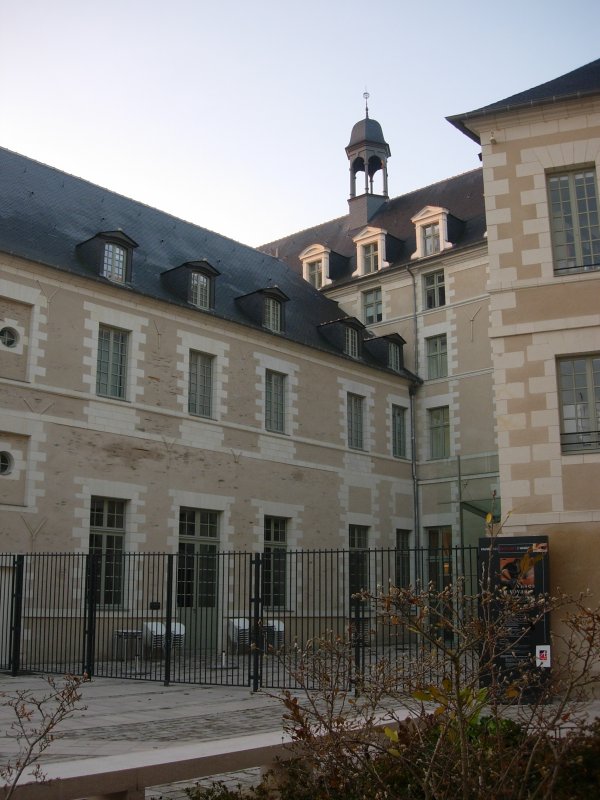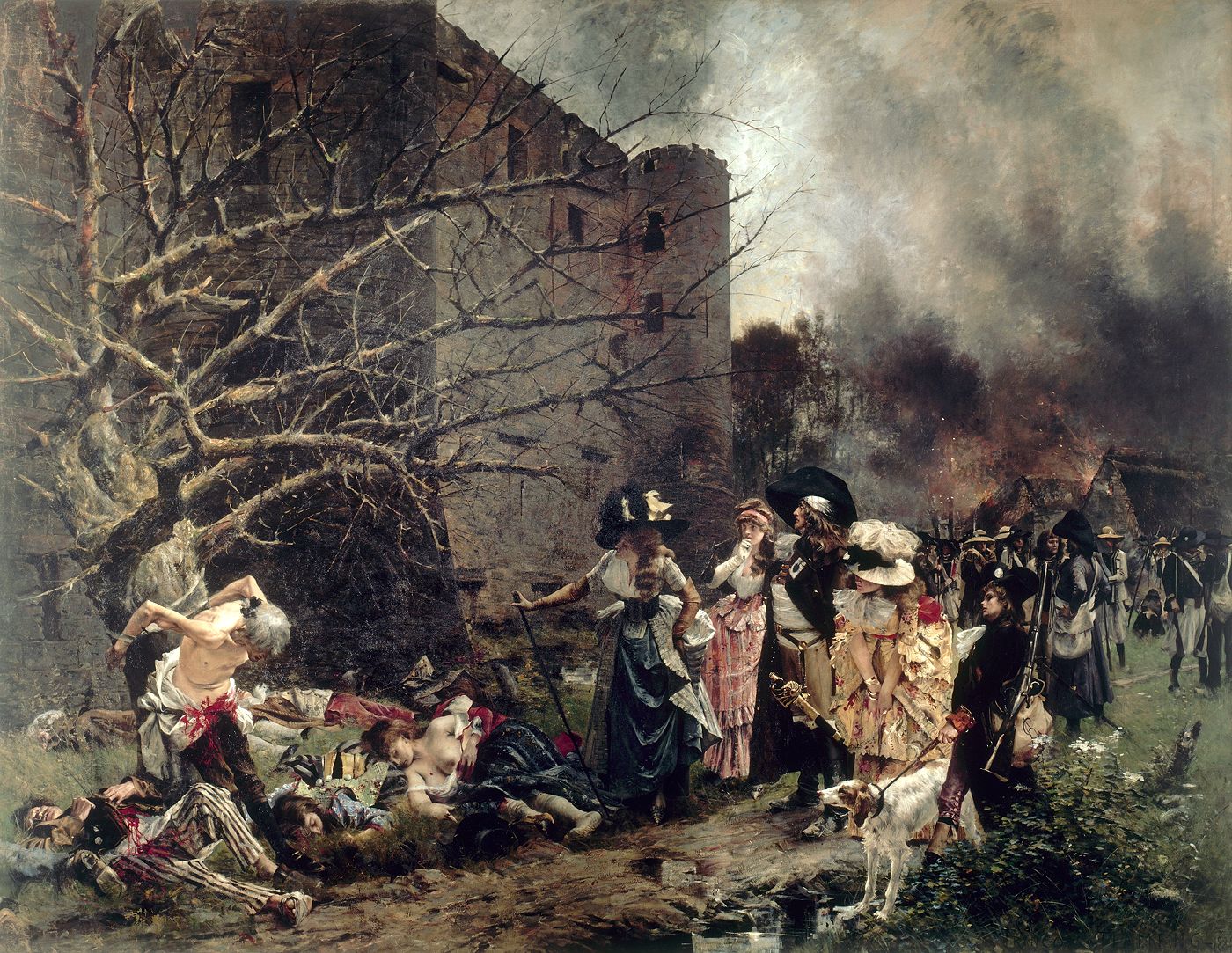|
Muséum D'histoire Naturelle D'Angers
The Muséum des sciences naturelles d'Angers (commonly called ''Muséum d'Angers'', as opposed to the arts museums, called ''Musées d'Angers'') is a municipal museum in Angers (Maine-et-Loire, France). Dedicated to Natural History, the Muséum d'Angers houses in its Collection (artwork), collections about objects, including birds, Seashell, shells, fossils, insects and herbarium samples, as well as hundreds of specimens Taxidermy, taxidermised or in liquid, skeletons, minerals, Scientific instrument, technical instruments and Documents. The Muséum d'Angers receives annually about visitors, as well as school groups, interns, researchers and volunteers. History Origins Open to the public since 1801, the Muséum d'Angers has a long and rich history. The initial nucleus of the collection dates from the French Revolution. By the Decree of 22 November 1790, Gabriel Eleanor Merlet de la Boulaye (1736–1807) is assigned the gathering of all books and natural history collect ... [...More Info...] [...Related Items...] OR: [Wikipedia] [Google] [Baidu] |
Angers
Angers (, , ;) is a city in western France, about southwest of Paris. It is the Prefectures of France, prefecture of the Maine-et-Loire department and was the capital of the province of Duchy of Anjou, Anjou until the French Revolution. The inhabitants of both the city and the province are called ''Angevins'' or, more rarely, ''Angeriens''. Angers proper covers and has a population of 154,508 inhabitants, while around 432,900 live in its metropolitan area (''aire d'attraction''). The Communauté urbaine Angers Loire Métropole, Angers Loire Métropole is made up of 29 communes covering with 299,500 inhabitants (2018).Comparateur de territoire INSEE Not including the broader metropolitan area, Angers is the third most populous Communes of France, commune in northwes ... [...More Info...] [...Related Items...] OR: [Wikipedia] [Google] [Baidu] |
Scientific Instrument
A scientific instrument is a device or tool used for scientific purposes, including the study of both natural phenomena and theoretical research. History Historically, the definition of a scientific instrument has varied, based on usage, laws, and historical time period. Before the mid-nineteenth century such tools were referred to as "natural philosophical" or "philosophical" apparatus and instruments, and older tools from antiquity to the Middle Ages (such as the astrolabe and pendulum clock) defy a more modern definition of "a tool developed to investigate nature qualitatively or quantitatively." Scientific instruments were made by mathematical practitioner, instrument makers living near a center of learning or research, such as a university or research laboratory. Instrument makers designed, constructed, and refined instruments for purposes, but if demand was sufficient, an instrument would go into production as a commercial product. In a description of the use of the eudiomet ... [...More Info...] [...Related Items...] OR: [Wikipedia] [Google] [Baidu] |
Musée Des Beaux-Arts D'Angers
The Musée des beaux-arts d'Angers is a museum of art located in a mansion, the "logis Barrault", place Saint-Éloi near the historic city of Angers, western France. Building The museum is part of the Toussaint complex, which includes the garden of Fine Arts, the David d'Angers gallery, the city library and the canteen. It displays a rich collection of art works acquired over the centuries on a total area of distributed as follows: * for permanent collections * for temporary exhibitions * for the public reception areas: lobbies, passing museums, auditorium, video room, coffee shop ... * for technical buildings Thanks to recent restoration the site combines history and development with the most modern presentation. The museum has been classified by the Journal des Arts Museum on 2010 as the best of western France and fourth museum in France (outside Paris). This ranking is due to a redesign of the museum's website and the richness and diversity of the exhibitions. History Af ... [...More Info...] [...Related Items...] OR: [Wikipedia] [Google] [Baidu] |
Campaigns Of 1796 In The French Revolutionary Wars
The French Revolutionary Wars continued from 1795, with the French in an increasingly strong position as members of the First Coalition made separate peaces. Austria and Great Britain were the main remaining members of the coalition. The rebellion in the Vendée was also finally terminated by General Hoche. Mignet's ''History of the French Revolution'' states: :"The Directory found the Rhine open towards Mainz, the war of La Vendée rekindled; the coasts of France and Holland threatened with a descent from England; lastly, the army of Italy destitute of everything, and merely maintaining the defensive under Schérer and Kellermann. Carnot prepared a new plan of campaign, which was to carry the armies of the republic to the very heart of the hostile states. Bonaparte, appointed general of the interior after the events of Vendémiaire, was placed at the head of the army of Italy; Jourdan retained the command of the army of the Sambre-et-Meuse, and Moreau had that of the army ... [...More Info...] [...Related Items...] OR: [Wikipedia] [Google] [Baidu] |
Monte Bolca
Monte Bolca is an Ypresian, Early Eocene-aged geologic site located near Verona, Italy, Verona, Italy. A ''Konservat-Lagerstätte'', it contains an extremely well-preserved and diverse marine biota, including the most diverse fish fauna of any Cenozoic fossil site, as well as many of the earliest fossil occurrences of modern marine fish groups. It was one of the first fossil sites with high quality preservation known to Europeans, with studies of its biota dating back to the 18th century and earlier, and is still an important source of fossils. History Strictly speaking, the Monte Bolca site is one specific spot near the village of Bolca in Italy, known as the ''Pesciara'' ("The Fishbowl") due to its many extraordinarily well preserved Eocene fish fossils. However, there are several other related outcroppings in the general vicinity that also carry similar fossils, such as Monte Postale and Monte Vegroni. The term Monte Bolca is used interchangeably to refer to the one, original s ... [...More Info...] [...Related Items...] OR: [Wikipedia] [Google] [Baidu] |
National Museum Of Natural History (France)
The French National Museum of Natural History ( ; abbr. MNHN) is the national natural history museum of France and a of higher education part of Sorbonne University. The main museum, with four galleries, is located in Paris, France, within the Jardin des Plantes on the left bank of the River Seine. It was formally founded in 1793, during the French Revolution, but was begun even earlier in 1635 as the royal garden of medicinal plants. The museum now has 14 sites throughout France. Since the 2014 reform, it has been headed by a chairman, assisted by deputy managing directors. The Museum has a staff of approximately 2,350 members, including six hundred researchers. It is a member of the national network of naturalist collections (RECOLNAT). History 17th–18th century File:Jardin du roi 1636.png, The Royal Garden of Medicinal Plants in 1636 File:Buffon statue dsc00979.jpg, Statue of Georges-Louis Leclerc, Comte de Buffon in the formal garden File:Buffon, Georges Louis - Lecler ... [...More Info...] [...Related Items...] OR: [Wikipedia] [Google] [Baidu] |
La Révellière-Lépeaux Par Gérard
LA most frequently refers to Los Angeles, the second most populous city in the United States of America. La, LA, or L.A. may also refer to: Arts and entertainment Music *La (musical note), or A, the sixth note *"L.A.", a song by Elliott Smith on ''Figure 8'' (album) * ''L.A.'' (EP), by Teddy Thompson *''L.A. (Light Album)'', a Beach Boys album * "L.A." (Neil Young song), 1973 *The La's, an English rock band *L.A. Reid, a prominent music producer *Yung L.A., a rapper *Lady A, an American country music trio * "L.A." (Amy Macdonald song), 2007 *"La", a song by Australian-Israeli singer-songwriter Old Man River *''La'', a Les Gordon album Other media * l(a, a poem by E. E. Cummings *La (Tarzan), fictional queen of the lost city of Opar (Tarzan) *''Lá'', later known as Lá Nua, an Irish language newspaper *La7, an Italian television channel *LucasArts, an American video game developer and publisher * Liber Annuus, academic journal Business, organizations, and government agenc ... [...More Info...] [...Related Items...] OR: [Wikipedia] [Google] [Baidu] |
French Directory
The Directory (also called Directorate; ) was the system of government established by the Constitution of the Year III, French Constitution of 1795. It takes its name from the committee of 5 men vested with executive power. The Directory governed the French First Republic from 26 October 1795 (4 Brumaire an IV) until 10 November 1799, when it was overthrown by Napoleon Bonaparte in the Coup of 18 Brumaire and replaced by the French Consulate, Consulate. The Directory was continually at war with foreign coalitions, including Kingdom of Great Britain, Britain, Habsburg monarchy, Austria, Kingdom of Prussia, Prussia, the Kingdom of Naples, Russian Empire, Russia and the Ottoman Empire. It annexed Austrian Netherlands, Belgium and the left bank of the Rhine, while Bonaparte conquered a large part of Italy. The Directory established 29 short-lived sister republics in Italy, Helvetic Republic, Switzerland and the Batavian Republic, Netherlands. The conquered cities and states were ... [...More Info...] [...Related Items...] OR: [Wikipedia] [Google] [Baidu] |
Louis-Marie De La Révellière-Lépeaux
Louis-Marie may refer to: *Louis Marie Baptiste Atthalin (1784–1856), French Army officer, politician, painter, watercolorist, and lithographer * Louis-Marie-Augustin d'Aumont, 4th Duke of Aumont of the Aumont family, a French noble house * Louis-Marie Autissier (1772–1830), French-born Belgian portrait miniature painter * Louis-Marie Baader (1828–1920), French painter of German descent *Louis-Marie-Edmond Blanquart de Bailleul (1795–1868), French Roman Catholic bishop * Louis-Marie-Raphaël Barbier (1792–1852), physician and surgeon from Berthier-en-Haut in Lower Canada *Louis-Marie Baudouin (1765–1835), French Roman Catholic priest, founder of the Sons of Mary Immaculate and the Ursulines of Jesus * Louis-Marie-Joseph Beaumont (1753–1828), farmer and political figure in Lower Canada * Louis-Marie Billé (1938–2002), French clergyman, archbishop of Lyon, cardinal until his death in office * Louis-Marie de Blignières (born 1949), French traditionalist Catholic priest ... [...More Info...] [...Related Items...] OR: [Wikipedia] [Google] [Baidu] |
War In The Vendée
The War in the Vendée () was a counter-revolutionary insurrection that took place in the Vendée region of French First Republic, France from 1793 to 1796, during the French Revolution. The Vendée is a coastal region, located immediately south of the river Loire in western France. Initially, the revolt was similar to the 14th-century Jacquerie peasant uprising, but the Vendée quickly became counter-revolutionary and House of Bourbon, Royalist. The revolt was comparable to the Chouannerie, which took place concurrently in the area north of the Loire. While elsewhere in France the revolts against the were repressed, an insurgent territory, called the by historians, formed south of the Loire-Atlantique, Loire-Inférieure (Brittany), south-west of Maine-et-Loire (Duchy of Anjou, Anjou), north of Vendée and north-west of Deux-Sèvres (Poitou). Gradually referred to as the "Vendeans", the insurgents established in April a "Catholic and Royal Armies, Catholic and Royal Army" wh ... [...More Info...] [...Related Items...] OR: [Wikipedia] [Google] [Baidu] |
Volunteer
Volunteering is an elective and freely chosen act of an individual or group giving their time and labor, often for community service. Many volunteers are specifically trained in the areas they work, such as medicine, education, or emergency rescue. Others serve on an as-needed basis, such as in response to a natural disaster. Etymology and history The verb was first recorded in 1755. It was derived from the noun ''volunteer'', in 1600, "one who offers himself for military service," from the Middle French ''voluntaire''. In the non-military sense, the word was first recorded during the 1630s. The word ''volunteering'' has more recent usage—still predominantly military—coinciding with the phrase ''community service''. In a military context, a volunteer army is a military body whose soldiers have chosen to enlist, as opposed to having been conscripted. Such volunteers do not work "for free" and are given regular pay. 19th century During this time, America experienced the ... [...More Info...] [...Related Items...] OR: [Wikipedia] [Google] [Baidu] |





